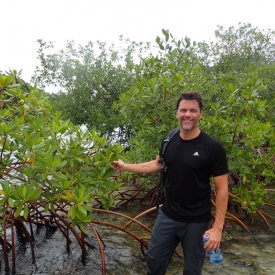Biodiversity
Role of Biodiversity in Ecological and Evolutionary Processes
Decades of research show strong links between biodiversity and ecosystem functions like primary productivity, resistance to disturbance, and nutrient cycling. However, most experiments conducted to date have ignored other trophic levels, limiting their ability to extrapolate their results natural systems. These experiments have also focused on relatively short-lived primary producers. My research has addressed these gaps by simultaneously manipulating plant and herbivore diversity, and focusing on long-lived woody species.
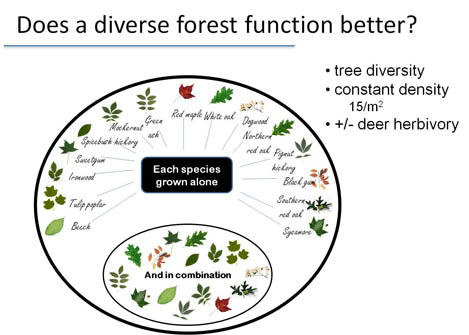
Research in our lab shows that consumers play key roles in strengthening or even promulgating diversity effects. First, we showed that herbaceous plants grown in genetically diverse patches were more resistant to vertebrate herbivore attack than plants grown in genetic monocultures (Ecology Letters 2010), and that vertebrate herbivores choose among plant genotypes within a species and alter natural selection on plant traits. To our knowledge, this was the first study to demonstrate natural selection for plant traits by a generalist, vertebrate herbivore, and one of the first to show that the magnitude of diversity effects at one trophic level depended on the presence of other trophic levels.
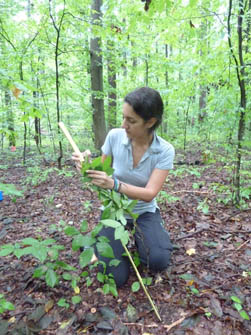
More recently, we found similar results in another experiment where we factorially manipulated tree sapling diversity (1 versus 15 species) and the presence/absence of white-tailed deer and found that after three years, monocultures outperformed mixtures in the absence of deer, but that the opposite pattern occurred in the presence of deer (Proceedings of the Royal Society B, 2014). Selective browsing on competitive dominants and associational protection from less palatable species appear drove this herbivore-driven diversity effect. Taken together, this research shows that higher trophic levels can completely alter the effects of diversity at lower trophic levels. Thus, diversity-ecosystem function studies must start manipulating diversity across multiple trophic levels if we are to truly anticipate the consequence of diversity loss.
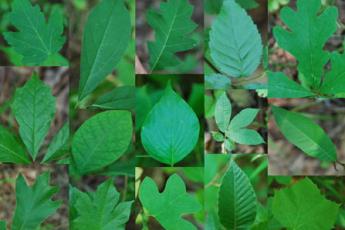
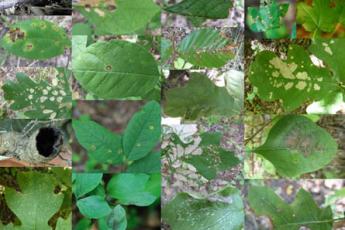
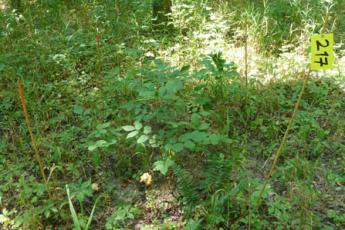
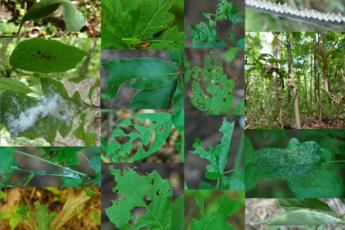
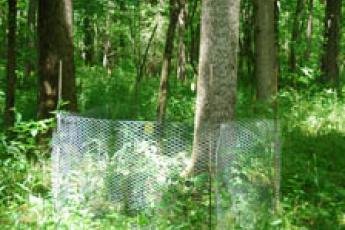
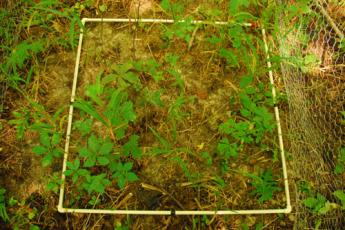
The BiodiversiTREE experiment manipulates:
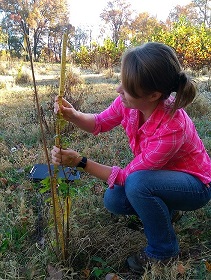
- Tree species richness
- Functional diversity
- Source provenance of trees (e.g., northern versus southern populations)
We established this experiment at the landscape scale in a fully instrumented watershed that has been monitored by SERC personnel for >30 years. It is designed to be an experimental platform for decades.
Importantly, we also installed a sister-experiment at the Smithsonian Conservation Biology Institute in Virginia. Along with two similar experiments in Panama, these ‘BiodiversiTREE’ experiments give the Smithsonian Institution an incredible research platform to address large-scale questions about the importance of tree diversity for key ecosystem functions.
To learn more about BiodiversiTREE click here.
To learn how you can get involved click here.


